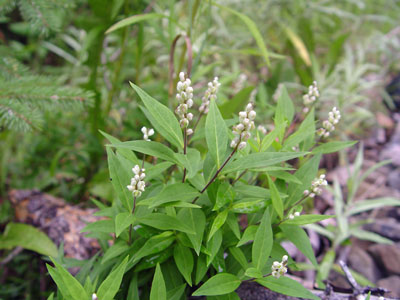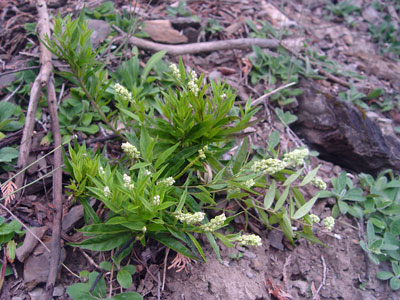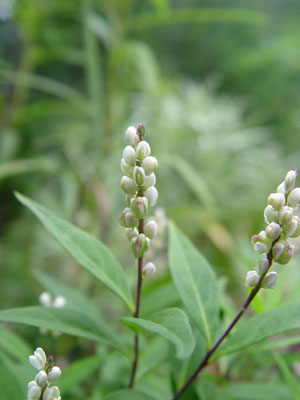DACF Home → Bureaus & Programs → Maine Natural Areas Program → Communities, Plants, and Animals → Rare Plants → Polygala senega

Polygala senega L.
Seneca Snakeroot
- State Rank: S1
- Global Rank: G4G5
- State Status: Endangered
Habitat: Dry rocky or gravelly, chiefly calcareous areas. [Non-tidal rivershore (non-forested, seasonally wet)]
Range: New Brunswick to Alberta, south uplands to Georgia, Arkansas.
Aids to Identification: Seneca snakeroot is a perennial milkwort that usually has several clustered stems (10-50 cm) from the same hard, knotty, horizontal root. The leaves are alternate, lance-shaped, the lowest of which is reduced in size, and are irregularly serrulate rather than entire. The small white flowers (3 mm long) are borne in dense terminal spike-like racemes.

Ecological characteristics: Although in some parts of its range Seneca snakeroot apparently grows in moist woods and prairies, in Maine it seems to be restricted to sunny well-drained sites on calcareous gravels or ledges. Apparently, this species once grew in abundance on the gravelly terraces along the Aroostook River in the Fort Fairfield area, but disappeared as land was cleared and cultivated and the area was developed.
Phenology: In Maine, flowers June - July. Milkworts are recognized by their irregular (zygomorphic) flowers. The lower petal is keeled and ornamented with fringe-like crests.

Family: Polygalaceae
Synonyms: None noted.
Known Distribution in Maine: This rare plant has been documented from a total of 2 town(s) in the following county(ies): Aroostook.
Reason(s) for rarity: Habitat naturally scarce and with clearing and cultivation, may be declining.
Conservation considerations: Found on sunny, only partly wooded banks. It is possible that increased shade would be detrimental to the populations, but effects are not really known.